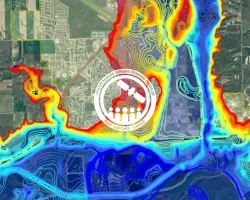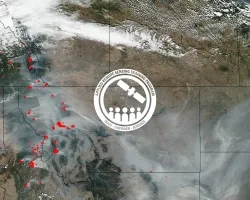Description
February 9, 16, & 23, 2021
Natural lakes and man-made reservoirs are a part of Earth’s surface water. Freshwater lakes and reservoirs are used for drinking water, fishing, and recreational activities. Aside from the aesthetic and scenic value added by their presence, lakes support surrounding plant and aquatic ecosystems and wildlife. A variety of factors affect lakes and reservoirs, including climate variability and change, land use, and other watershed activities influencing surface runoff and groundwater. Therefore, monitoring the water quantity and quality of lakes and reservoirs is crucial for their sustainable management. This training focuses on introducing remote sensing observations for monitoring the water level of lakes; a critical surface water component affecting the residential, economical, and recreational sectors in the area. Recent observations of lake bathymetry based on remote sensing observations will also be presented.
- Fundamentals of Remote Sensing
- Optional For Part 1: Although not a prerequisite, in Part 1 we will present a Google Earth Engine (GEE) code if participants want to use the code to access Global Surface Water Data through GEE for their own study area/research. Create a Google Earth Engine Account here if you are interested: https://earthengine.google.com/
- We will also demonstrate access of the same data using a GUI based JRC’s Global Surface Water Explorer so if you are not comfortable with coding, you will have that option too.
- Optional For Part 3: Although not a prerequisite, in Part 3 there will be a demonstration using Panoply. Panoply is an open source software to read and view netCDF, HDF, and GRIB data. It can be downloaded and installed from the NASA GISS website: https://www.giss.nasa.gov/tools/panoply/
By the end of this training attendees will learn to:
- Identify the remote sensing data and methodology required to obtain water level and bathymetry of lakes
- Access water height and bathymetry data for monitoring lake levels
- Understand the use of lake level and bathymetry data for lake and reservoir management
Federal, state, regional, and local public and private organizations involved in water resources and ecosystem management, dam and hydropower operations, and waterfront recreation and development planning.
- Three 1.5-hour sessions
- Introduction to relevant satellites and sensors for monitoring lakes and reservoirs
- Overview and applications of remote sensing-based data sets to facilitate lake and reservoir management
- Data acquisition for global surface water derived from optical data in Google Earth Engine
Materials:
Materiales en Español:
- Overview of methodology for deriving lake level heights using satellite altimetry data
- Data acquisition of global lake levels derived from satellite altimetry data
- Case study of inter-annual and seasonal variations in lake and reservoir level height
Materials:
Materiales en Español:
- Overview of methodology for using remote sensing observations to obtain water level height and bathymetry of water bodies
- Data acquisition of water level height and bathymetry data for global water bodies
- Case Study: Monitoring water level height for lakes and reservoirs with ICESat-2
Materials:
Materiales en Español:



